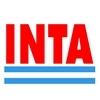Explore all the information on
Feedstuffs
Welcome to the page about Feedstuffs of Engormix; a source of knowledge on Feedstuffs.
1. Introduction Enzymes have been developed as feed additives to improve the digestion and absorption of nutrients. The first phytase products entered the market in 1991 and have since been used extensively in monogastrics. Supplementation with exogenous phytases in cereal vegetable-based diets has been shown to improve monogastric animal production and can also contribute to breaking down phytates. This reduces phosphorus contamination and improves the utilization of phytic...
Comments : 0
Recommendations: 1
Introduction Animal production relies on the supply of nutritious feeds supporting high growth, welfare and health of animals and the production of high-quality products in an environmentally sustainable and profitable manner. With feed cost representing 50 to 80% of the total production cost, feed manufacturers have a very important role in the overall economic viability of animal agriculture enterprises. Animal production involves a complex “nutritional supply...
Comments : 3
Recommendations: 2


Pre- Pelleting Process in Aquafeed Production Josef Barbi (E.S.E. & Intec)
Suggested link
I. INTRODUCTION Whole grain feeding (WGF) involves the partial substitution of ground grain with whole grain in boiler diets. Whole grain (WG), usually wheat, may be added either prior to (prepellet) or following (post-pellet) steam-pelleting. WGF generates heavier and presumably more functional gizzards, which are thought to be the genesis of responses in feed conversion ratios (FCR) and energy utilisation (Liu et al., 2015). However, post-pellet WGF also provides broilers with the...
Comments : 0
Recommendations: 0
1. Introduction The term ‘Aflatoxins’ (AFT) typically refers to the sum of variants AFB1, AFB2, AFG1, AFG2, while ‘Fumonisins’ (FBs) refers to the sum of variants FB1 and FB2 [1]. These groups are mycotoxins produced by molds of genera Aspergillus spp. and Fusarium spp., which commonly colonize corn [2–4]. The contamination of corn by AFT or FBs (especially the main variant FB1) has health implications for consumers of corn-derived products. The AFT are...
Comments : 0
Recommendations: 0
.jpg&w=3840&q=75)

The Circular Bioeconomy and its impact on Feed Ingredients
Suggested link
1. Introduction Maize (Zea mays L.) is an important food security and income-generating crop in various areas of the world. Improvements in yields had been obtained by selection of hybrids, mechanisation, irrigation, use of mineral fertilisers and phytosanitary products, leading to an increase in the world production associated with global trades. Besides this agroeconomic system, farmers produce maize as a subsistence crop using local resources. Even in Europe, groups of organic...
Comments : 0
Recommendations: 0
I. INTRODUCTION Exogenous feed enzymes were first introduced as commercially-relevant feed additives in the 1980s with an initial focus on reduction of the antinutritional effects of high molecular weight soluble pentosans in wheat- and barley-based diets for young broiler chickens (Bedford & Partridge, 2010). Exogenous phytase was launched in the early 1990s to increase the digestibility of organic phosphorus and to reduce the antinutritional effects of phytic acid (Selle &...
Comments : 0
Recommendations: 1


Pre- Pelleting Process in Aquafeed Production Josef Barbi (E.S.E. & Intec)
Suggested link
Cereals are an international commodity grown in almost all cultivable regions of the world. The three most important cereals that are destined for human and animal consumption are maize ( Zea mays ), wheat ( Triticum spp.) and rice ( Oryza sativa ). These crops can be affected by biotic and abiotic factors in all phenological stages, affecting quality and final yield. The Fusarium graminearum species complex is the main causal agent of ear...
Comments : 0
Recommendations: 0
1. Introduction Wheat is one of the most important staple foods in the world, but it is jeopardized by many toxigenic fungal species that produce large numbers of mycotoxins with diverse chemical structures. In Hungary, the total wheat production area is approximately one million hectares [1], spanning diverse agronomic and climatic conditions. Major toxigenic fungi. Fusarium species are among the main wheat pathogens in Hungary, posing serious risks to animal and human health...
Comments : 0
Recommendations: 0
.jpg&w=3840&q=75)

The Circular Bioeconomy and its impact on Feed Ingredients
Suggested link
1. Introduction Soybean expeller (SBE), a by-product obtained during the extruding-expelling process of soybean oil extraction [1], is highly valued as a protein-rich component in animal feed and soy-based food products [2–5]. In Argentina, nearly one million tons of SBE are produced annually [6] in 373 extruding-expelling facilities, primarily located in the Pampa’s region [7]. The average composition of SBE in Argentina is 7.2% moisture, 44.2% protein, and 8.1% residual...
Comments : 0
Recommendations: 1
Corn remains the primary energy source in poultry diets. However, not all corn delivers equal nutritional value. Poor grain quality can significantly reduce its Metabolizable Energy (ME) for poultry, affecting both bird performance and production cost. Energy Loss Equation in Poultry Due to Poor-Quality Corn Barbarino and Rostagno (2001) developed an equation to estimate the Metabolizable Energy Lost (MEL) in poultry feed based on corn...
Comments : 0
Recommendations: 2


Pre- Pelleting Process in Aquafeed Production Josef Barbi (E.S.E. & Intec)
Suggested link
Hello. What are the latest updated toxin limit values of raw materials and feeds? Thank you ...
Comments : 0
Recommendations: 0
Introduction The great majority of the main oilseed and cereals crops globally are grown to satisfy food demand, including a sizeable indirect component via consumption of meat and other animal products. Since the 2000s the advent of biofuels has added a variable but significant component to this equation. The first biofuels wave in the 2000s had a rocky trajectory due to associated food price spikes in 2011 and the ‘food versus fuel’ controversy. Today, governments...
Comments : 0
Recommendations: 0
.jpg&w=3840&q=75)

The Circular Bioeconomy and its impact on Feed Ingredients
Suggested link
...
Comments : 0
Recommendations: 0
Mr. Ricky Thaper, a key opinion leader with 30 years of experience in India's poultry sector, reflects on the industry's impressive growth. He discusses the challenges of maintaining high-quality soybean meal in poultry feed, highlighting the detrimental effects of cost-cutting measures and emphasizing the need for improved standards and the efforts of poultry associations to ensure soybean meal retains its nutritional value and protein quality for optimal poultry health and growth....
Comments : 1
Recommendations: 2


Pre- Pelleting Process in Aquafeed Production Josef Barbi (E.S.E. & Intec)
Suggested link
Ricky Thaper (Poultry Federation of India) explains how increases in feed costs and restrictions on imported GM-modified soybean meal and corn affect India's poultry industry in this Engormix interview during IPPE 2025 in Atlanta, USA....
Comments : 1
Recommendations: 1
Explore the pivotal role of amino acids derived from rendered products in aquaculture with Dr. Guoyao Wu, a University Distinguished Professor at Texas A&M University. As part of the International Rendering Symposium 2025, this session delves into sustainable practices that enhance fish nutrition and promote environmental stewardship.
Transcript...
Comments : 0
Recommendations: 0
.jpg&w=3840&q=75)

The Circular Bioeconomy and its impact on Feed Ingredients
Suggested link
Lucas Cypriano speaks about the The Circular Bioeconomy and Its Effects on Carbon Allocation in Feed Ingredients at the International Rendering Symposium. ...
Comments : 0
Recommendations: 0
Explore the dynamics of international animal fats markets with Felipe Hurtado, CEO & Founder of AgriGlobal Market. This session at the International Rendering Symposium 2025 delves into global trade trends and market insights shaping the industry....
Comments : 0
Recommendations: 0


Pre- Pelleting Process in Aquafeed Production Josef Barbi (E.S.E. & Intec)
Suggested link
Dr. Pedro E. Urriola discusses the Use of Food Waste Ingredients in Animal Feed at the International Rendering Symposium...
Comments : 0
Recommendations: 1
Gain insights into the emerging market opportunities in Africa with Matthew Meredith, Managing Principal at Lixcap. At the International Rendering Symposium 2025, this session explores economic growth prospects and investment potential across the continent....
Comments : 0
Recommendations: 0

























